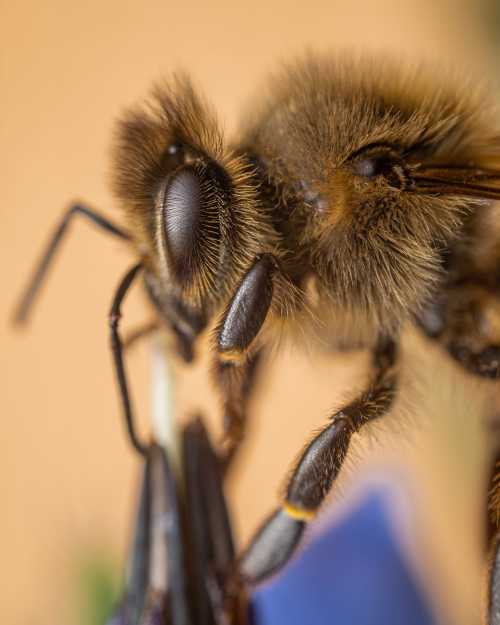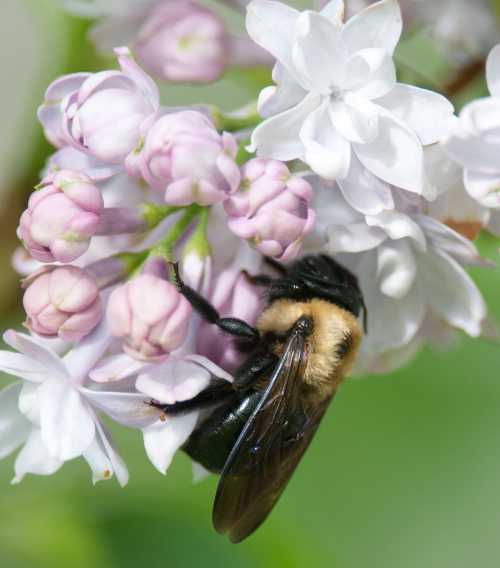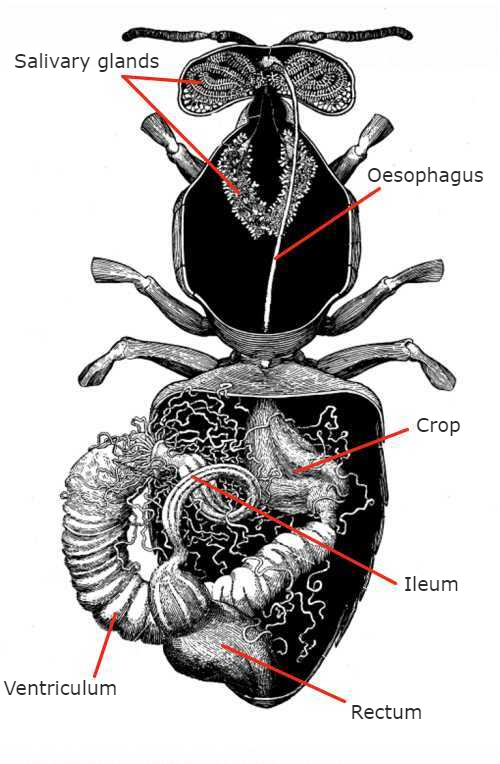The Bee Face Close Up
What does the face of a bee look like close up?
It will of course, depend on the species, but bee faces do share some common features.
Here we will look at close up images of faces of different bee species.
A labelled drawing of a bee face and description of the features is also provided, along with a video gallery.
The Bee-autiful Bee Face - A Close Up View
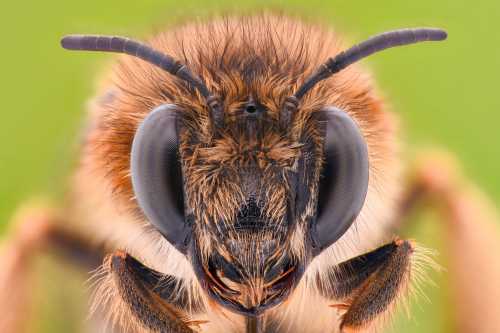 Close up face of a honey bee worker
Close up face of a honey bee workerIn my view, the faces of bees are adorable.
Some bee species have hairier faces than others, and there is variety in shape and length, as well as distinct feature and markings.
Capturing quality pictures of bees can assist identification, and examining facial features and shape, can assist a mellitologist in their efforts to identify specific species and determine the sex of the bee.
Key features of a bee face
Here is a labelled drawing of a bee face with descriptions of the features below.
My resources are Michener1 and Falk2.
Facial foveae are present on this bee face drawing, but this feature is only present on some species (notably, in Hylaeus (Yellow-face bees), females of Colletes, and most andrenids3).
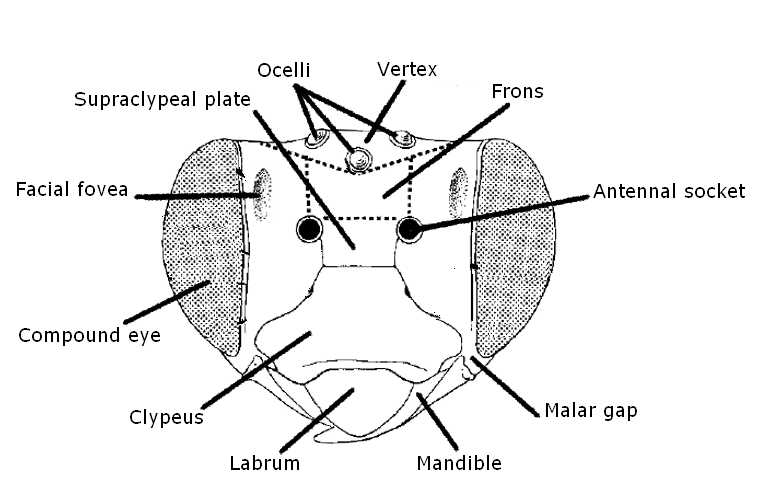 Labelled drawing of a bee face, after Michener(1) and Falk(2).
Labelled drawing of a bee face, after Michener(1) and Falk(2).Note that facial foveae are not present on all bee species.
Here is a photograph indicating some of the above features on an actual bee.
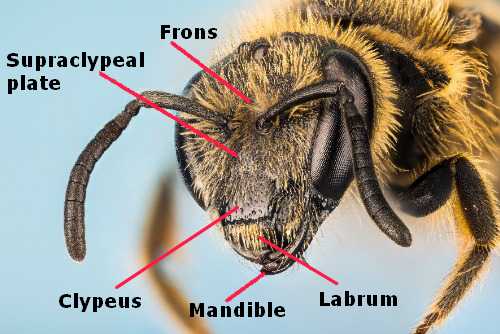 Close up of the face of an Ivy Bee, Colletes hederae with labels of some facial features
Close up of the face of an Ivy Bee, Colletes hederae with labels of some facial featuresOcelli
These are the 3 simple eyes, actually at the top of the head.
Vertex
The space between the three ocelli.
Frons
This is the very top of the head between the ocelli and the base of the antennae.
Clypeus and Supraclypeal plate
The clypeus is the main, top part of the face between the antennae and labrum. The supraclypeal plate is a small 'plate' like feature below the clypeus.
In some species, distinctive markings are present in this facial area, and differences are seen in males and females of the same species.
These facial marking differences between males and females are visible in species such as
- the Eastern Carpenter bee, Xylocopa virginica;
- Yellow-face bees (Hylaeus);
- the Yellow Loosestrife bee, Macropis Europaea, among others.
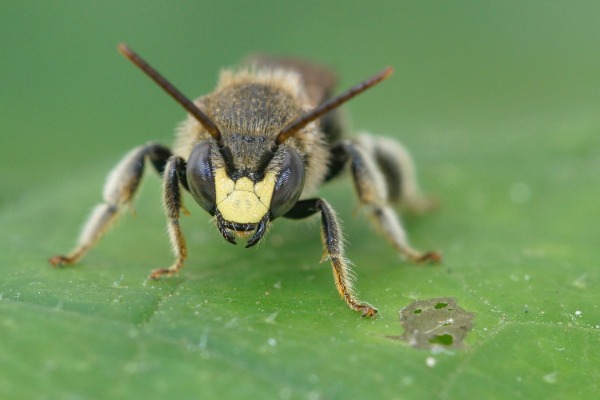 Male Yellow Loosestrife Bee, Macropis Europaea
Male Yellow Loosestrife Bee, Macropis EuropaeaIn some other species, more or less hair is visible, with males having notably hairier faces than females, as well as a distinct 'tuft' of hair that may be likened to a 'moustache'.
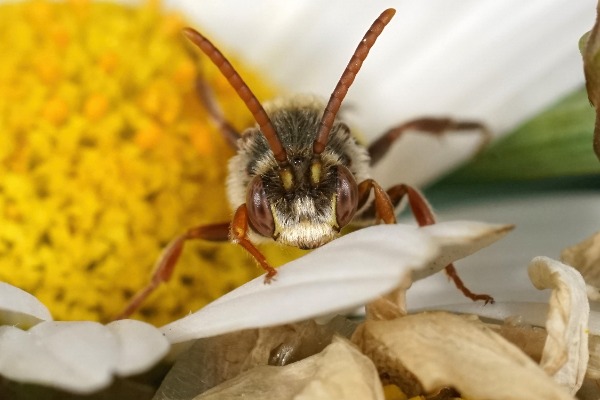 The face of a male Lathbury's nomad bee, Nomada lathburiana
The face of a male Lathbury's nomad bee, Nomada lathburianaHowever, it should also be noted that bee species differ in general with regard to their 'hairiness', and this needs to be taken into account during identification.
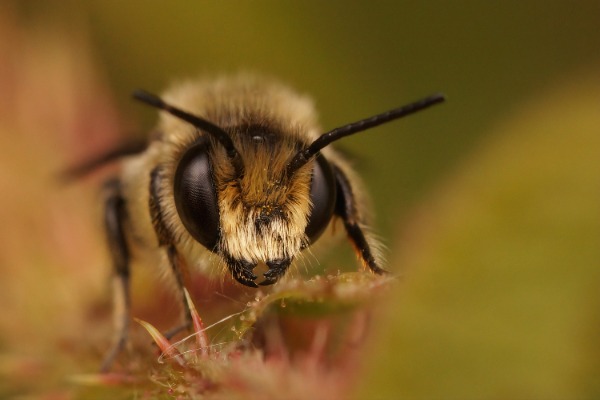 Face of a male Patchwork leafcutter bee, Megachile centuncularis - note hairy 'moustache'- like fringe (tuft)
Face of a male Patchwork leafcutter bee, Megachile centuncularis - note hairy 'moustache'- like fringe (tuft)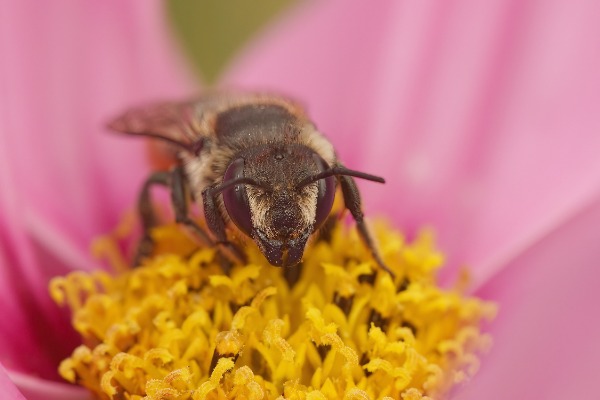 The face of a female Patchwork leafcutter bee, Megachile centuncularis
The face of a female Patchwork leafcutter bee, Megachile centuncularisCompound eyes
In bees, the two large eyes are positioned at the side of the face.
This is in contrast with flies, where eyes face forward.
Both honey bees and Coelioxys (sharp-tail bees) have hair on the surface of their compound eyes.
Labrum
The lowest part of the face below the clypeus. The shape and colour can aid identification.
Malar gap (also called 'malar area')
The gap between the bottom of the eyes and the base of the mandibles.
Mandibles
Essentially these are the 'jaws' (the bee version of 'teeth'), used during activities such as nest building, nectar robbing, and defense.
Facial fovea
These are distinct depressions which are often covered with an exceedingly short pile (short, felt-like hairs). Facial foveae are present in some species as described above, although they can be difficult to distinguish3.
Antennal sockets
Housing the antennae.
The scape is the first easily visible segment of the antennae.
The image below shows the 3 main sections of the bee antennae.
The flagellum is visibly composed of segments. Again, the number of segments can aid mellitologists (bee expert) when identifying bee species and sex.
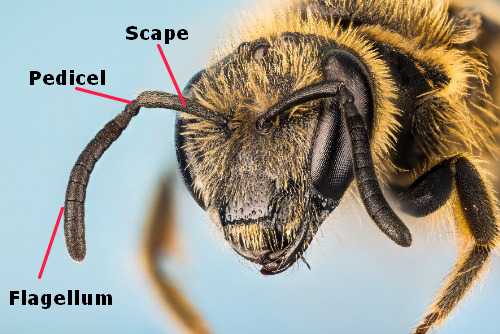
References
1. Michener, Charles D. (2000). The Bees of the World. John Hopkins University Press.
2. Field Guide to Bees Of Great Britain And Ireland by Steven Falk, Bloomsbury 2015.
3. Stephen, W. P., G. E. Bohart, and P. F. Torchio. 1969. The Biology and External Morphology of Bees with a Synopsis of the Genera of North-western America. Agr. Exp. Sta., Oregon State University, Corvallis. 140 p. August 1969.
If you found this page helpful or interesting, I'd really be grateful if you would share it with others - if not this page, perhaps another, such as Gardening For Bees.
Thank you so much :) .
